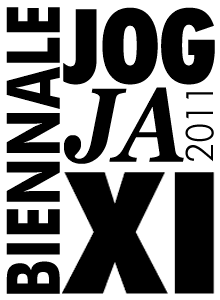GUGUR GUNUNG, GOTONG ROYONG, and JAMMING
February 23, 2011

Three terms, which were chosen for the 2009 Biennale Jogja X (BJ X) and whose meaning and implications are interesting to investigate, are the local idioms gugur gunung and gotong royong, along with the global, English idiom “jamming”. Those three terms, or idioms, were consistently highlighted and became the key words of BJ X 2009.
Gugur gunung and gotong royong have similar meanings. However, gugur gunung refers to a more active meaning, which is working together to achieve the goals that are coveted (collectively); while, gotong royong refers to the nature of togetherness as the result of working together (helping each other). Jamming – in the subtitle “Jogja Jamming” – was the theme of BJ X while the concepts of gugur gunung and gotong royong were two terms consistently mentioned in almost every speech, publication and interview during BJ X. The combination of these local and global phrases by Butet Kertaredjasa, the Director of BJ X 2009, in his speech on the opening night of the Biennale was used to describe the situation and the spirit of the event:
This situation can be likened to the Javanese idiom, gugur gunung, where gotong royong, togetherness, is still strong in the art process in Yogyakarta. This dynamic can also be described as a “jam session”, where each artist can dialog, share, and create together in harmony. That is the real meaning of JOGJA JAMMING.
During Biennale Jogja X, the atmosphere of gugur gunung and gotong royong was evidenced in the management style of the team of administrators, who supported each other, bore the burden, and lived together. For example, food and beverages were a joint effort, with everyone providing the facilities and equipments together. This support system created an atmosphere of togetherness, which is hard to describe, and a romanticism that imprinted on everyone’s heart that was there. Gugur gunung and gotong royong were apparently also evident through through the process of creating artworks, which were exhibited in BJ X. As I myself witnessed one afternoon at a committee member’s house, rolls of canvas were donated and brought by someone for use by artists to create paintings to be displayed on the streets. The spirit of gugur gunung and gotong royong was also felt when the management decided to create an event free from artwork sales transactions. To be implemented, it required the support of many parties who gave their attention, hard work, facilities and funds to the event, whether from personal, community, governmental, nonprofit, or corporate donations.
Gugur gunung and gotong royong in the context of Yogyakarta society and BJ X, as described above, actually relies on the practice of subsidizing. This encompasses a spirit – which is closely related with how several levels and classes in society are connecting, communicating, and helping each other – to achieve the best result for all people and parties. The practice of subsidizing is still happening today in Yogyakarta. In this case, BJ X, besides becoming an experimental space in the 20+ years of the history of the Jogja Biennale, also became a space for capturing a picture of the changing forms and inter-relations in visual arts and social life in Yogyakarta society. The spirit of subsidizing still exists and is felt, not only in BJ X, but also in the daily life of the people of Yogyakarta. That spirit was captured by BJ X and became a new starting point, or transition, for the next biennales.
As a spirit, gugur gunung and gotong royong in BJ X 2009 seem quite appropriate to start the transformation of Biennale Jogja into it’s future form. It is able to move the art and the social field of the city into a unique sphere of togetherness which fits the changing moment. However, this spirit also should be able to be translated by each new context and challenge. Likewise, as a format, the concept jamming seems quite accurate to describe a way of activating the individuals, communities, institutions, and all the resources of Yogyakarta, who sometimes experience tension between individuality and collectivity, whether local or global. During the Biennale, it was not just a theme; jamming was practiced, but it must be continually improvised. Gugur gunung and gotong royong have already been tested and should not stop and just become a slogan; these ways of being must move with the dynamics of societal change in Yogyakarta.
The arguments on managerial matters, the implementation formats and the concept of Biennale Jogja, should continue to be developed and emerge in a healthy way. Whether it will be a festival or become international; whether it will be managed as a non-profit or adjusted with the market; whether Biennale Jogja becomes an experimental space or a promotion space, or even an advocacy space, etc – Biennale Jogja must change and face different challenges every time. How it moves the subsidizing spirit and in the end circulates the city’s resources and energy, must reflect the dynamics of Yogyakarta society itself. (Yoshi Fajar Kresnomurti, Coordinator of Research and Development Department, Indonesia Visual Art Archive, Yogyakarta, Indonesia)










